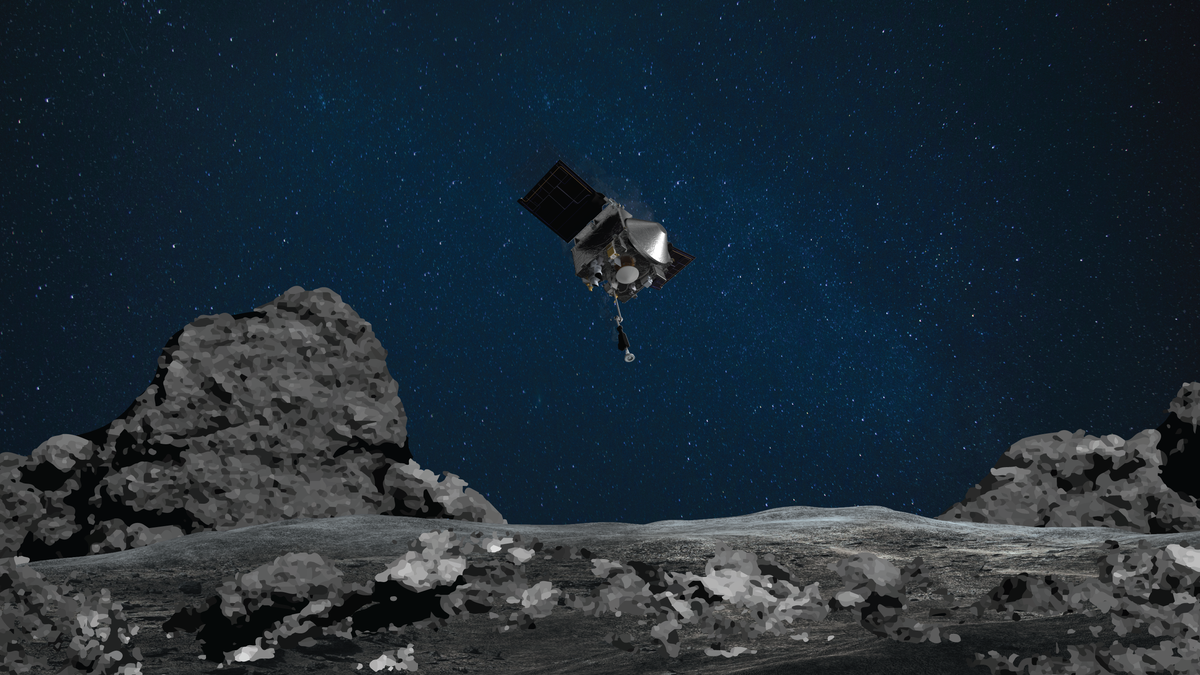
For this to work, however, the spacecraft’s incoming trajectory must be precise. “If the capsule is angled too high, it will skip off the atmosphere,” Mike Moreau, OSIRIS-REx deputy project manager at NASA’s Goddard Space Flight Center, said in a statement. “Angled too low, it will burn up in Earth’s atmosphere.” To make sure the precious samples stay safe, NASA will conduct a series of maneuvers over the next year to bring the spacecraft closer to Earth at a precise speed and direction.
Advertisement
On September 21, the team behind the mission fired the spacecraft’s thrusters for 30 seconds, changing the spacecraft’s trajectory for the first time since it parted ways with Bennu on May 10, 2021, the space agency announced on Friday. The first maneuver will have OSIRIS-REx pass Earth at a distance of about 1,367 miles (2,200 kilometers), while the final correction next year will bring it to within 155 miles (250 kilometers) from the surface. At that distance, the spacecraft will be able to safely drop off the samples.
OSIRIS-REx launched on September 8, 2016. The mission is NASA’s first attempt to return surface materials from an asteroid such that it can be anazlyed in a lab. Its target Bennu is a near-Earth object that orbits the Sun every 436.6 days and is believed to have formed 4 billion years ago. By analyzing samples from Bennu, scientists can get a better idea of the type of materials that existed in the early solar system.
Advertisement
After OSIRIS-REx drops off the sample from Bennu to Earth, the spacecraft will go off on another adventure to rendezvous with another asteroid, Apophis.
More: Walking on Asteroid Bennu Would Be Like Stepping Into a Ball Pit, NASA Says